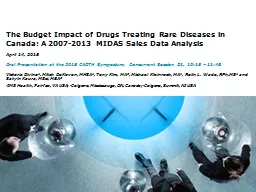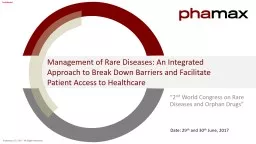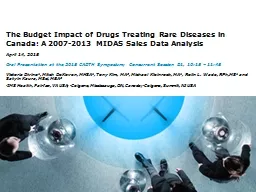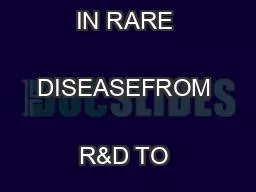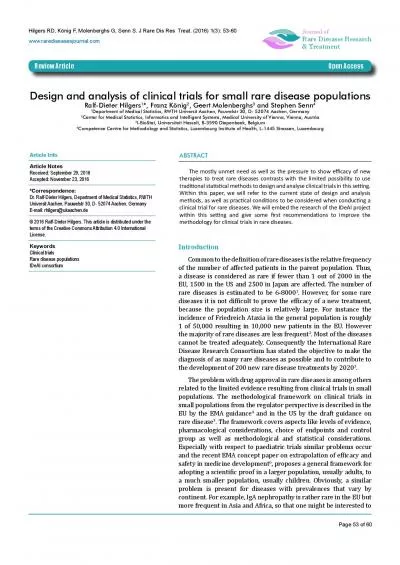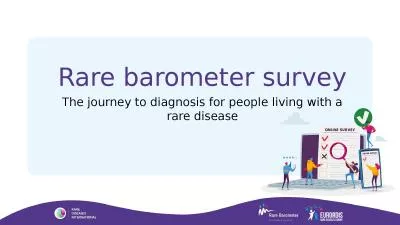PPT-The Budget Impact of Drugs Treating Rare Diseases in Canada
Author : myesha-ticknor | Published Date : 2018-12-06
A 20072013 MIDAS Sales Data Analysis April 14 2015 Oral Presentation at the 2015 CADTH Symposium Concurrent Session D1 1015 1145 Victoria Divino 1 Mitch
Presentation Embed Code
Download Presentation
Download Presentation The PPT/PDF document "The Budget Impact of Drugs Treating Rar..." is the property of its rightful owner. Permission is granted to download and print the materials on this website for personal, non-commercial use only, and to display it on your personal computer provided you do not modify the materials and that you retain all copyright notices contained in the materials. By downloading content from our website, you accept the terms of this agreement.
The Budget Impact of Drugs Treating Rare Diseases in Canada: Transcript
Download Rules Of Document
"The Budget Impact of Drugs Treating Rare Diseases in Canada"The content belongs to its owner. You may download and print it for personal use, without modification, and keep all copyright notices. By downloading, you agree to these terms.
Related Documents

